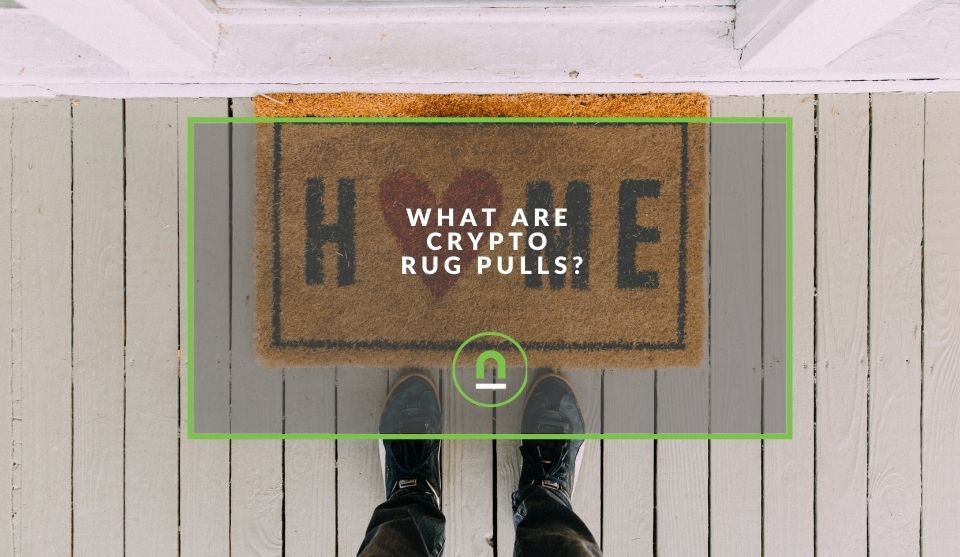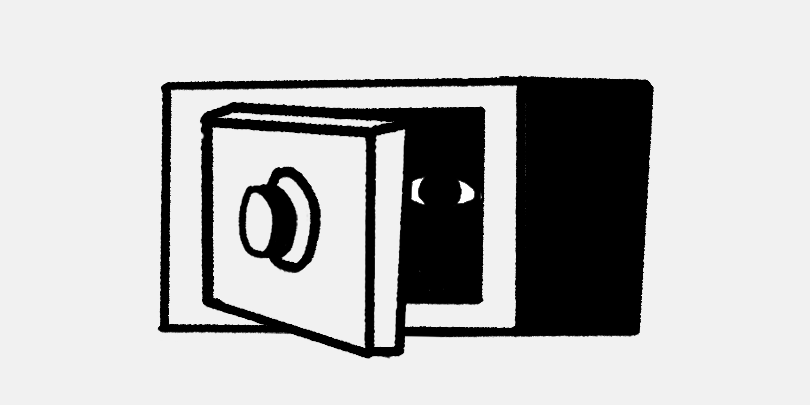rugpull что это такое
Организаторы проекта TurtleDex исчезли, выведя из его пулов ликвидности на децентрализованных биржах Pancake Swap и Ape Swap в сети Binance Smart Chain 9000 BNB (
Средства были конвертированы в Ethereum, разделены между 9 кошельками и отправлены на биржу Binance, уточнил пользователь Twitter под ником DeFi Stalker.
Все аккаунты TurtleDex в соцсетях удалены.
Сотрудничавшая с проектом платформа JetfuelFinance подтвердила факт мошенничества.
Attention — The Turtledex (#TTDX) team has exit scammed.
We are just as shocked as everyone to see this unfold.
Please see the tweet below from @DefiStalker and help us track down the funds sent to @binance #TTDX is being removed from Jetfuel. https://t.co/ZUjRmPbrs2 https://t.co/3WvsYSWATg
По словам журналиста Колина Ву, некоторые пользователи TurtleDex обратились к главе Binance Чанпэну Чжао с просьбой заблокировать украденные средства. По иронии, ранее команда проекта на вопрос членов сообщества, могут ли они скрыться с деньгами, ответила:
«Нет, потому что руки слишком коротки».
BSC’s popular project, Turtle.dex, rugpulled, taking about 9,000 BNB, website and telegram deleted. Some are converted into ETH to Binance, investors are urging Binance to freeze. To the question of rugpull, Turtle officially stated before: No, because hands are too short. pic.twitter.com/xqVmGShm9f
DeFi Stalker сообщил, что в феврале аудит смарт-контракта TurtleDex провело агентство TechRate и не обнаружило серьезных проблем.
«Какова цель аудита? Если разработчики могут запросто вывести ликвидность, правильно ли мы ставим вопросы?», — добавил пользователь.
TurtleDex позиционировал себя как децентрализованную платформу хранения данных и файлов для пользователей. 15 марта проект провел предварительную продажу токенов TTDX, за два часа собрав 9000 BNB.
Напомним, по сообщениям СМИ, в феврале экзит-скам совершили сразу четыреDeFi-проекта в сети Binance Smart Chain.
Подписывайтесь на новости ForkLog в Twitter!
TurtleDex от Binance Smart Chain быстро набирает обороты после запуска
Оказывается, у черепахи руки достаточно длинные, чтобы натянуть коврик.
Вчера, 19 марта, проект хранилища файлов Binance Smart Chain (BSC) TurtleDex выполнил мошенничество с выходом «rugpull» — разговорный термин, когда разработчики проекта истощают ликвидность или хранят средства, инвестированные по протоколу.
После предпродажного раунда 15 марта, в ходе которого было собрано 9000 токенов BNB на сумму почти 2,5 миллиона долларов, команда вытащила эти средства из торговых пулов на собственных децентрализованных биржах Pancake Swap и Ape Swap, конвертировала ликвидность в ETH и отправила средства на биржу Binance.кошельки для продажи, согласно транзакциям с кошельками команды TurtleDex.
Jet Fuel Finance, протокол хранилища урожая, который сотрудничал с TurtleDex в рамках сельскохозяйственной инициативы, подтвердил треп в Twitter, заявив, что они были «шокированы» мошенничеством:
Внимание — команда Turtledex (#TTDX) обманула выход.Мы так же шокированы, как и все остальные, увидев это.Просмотрите приведенный ниже твит от @DefiStalker и помогите нам отследить средства, отправленные на @binance #TTDX удаляется из Jetfuel.https://t.co/ZUjRmPbrs2 https://t.co/3WvsYSWATg
— Jet Fuel BSC ✈️ (@Jetfuelfinance) March 19, 2021
Сайт TurtleDex закрылся, а социальные сети были удалены.
Некоторые инвесторы указали, что проект ранее проходил аудит, и серьезных проблем с безопасностью выявлено не было, что вызвало новый виток критики в отношении эффективности аудитов.
— DeFi Stalker (@DefiStalker) March 20, 2021
По иронии судьбы, судя по скриншотам, потенциальные инвесторы спрашивали команду о возможности провала в официальных каналах;Команда в шутку ответила, что это невозможно, так как руки черепахи слишком короткие.
— Danusarf (@Danusarf) March 19, 2021
“Chasing funds back”
Несмотря на убытки, у брошенных инвесторов TurtleDex есть надежда.
Вскоре после мошенничества Meerkat Finance — одного из крупнейших в истории мошенничества с DeFi на сумму 31 миллион долларов — разработчик проекта объявил, что мошенничество было «экспериментом» и что все средства будут возвращены пользователям.
Слабая «экспериментальная» поддержка и резкий поворот спровоцировали некоторые предположения о том, что Binance, возможно, вмешался, чтобы смягчить последствия мошенничества.BSC — это полузакрытая система, в которой Binance контролирует включение и выключение экосистемы;У защищенных средств есть несколько способов выйти из BSC без передачи централизованного контроля Binance.
Генеральный директор Binance Чанпэн Чжао, более известный как CZ, в начале недели отметил в Твиттере, что биржа помогла «отогнать средства обратно», когда другие проекты с упорным трудом пытались продать средства через Binance.
Наиболее желанный.В последнее время мы действительно помогаем с несколькими рывками коврика.Подробности раскрывать пока не могу.https://t.co/2zybpF0Yv7
— CZ Binance (@cz_binance) March 16, 2021
What Are Crypto Rug Pulls?
02 April 2021 | 0 comments | Posted by Che Kohler in Money Talks
The birth of cryptocurrency and blockchain through the launch of Bitcoin has expanded into an entirely new sector complete with new jobs, jargon and much more. Keeping up with changes in the crypto market is near impossible as this decentralised world moves at breakneck speeds.
Naturally, when speed is the name of the game, things like security, transparency and risk management are overlooked, and we see breakages in the system.
These breakages can manifest in hacks to hard forks or, as we refer to it, «rug pulls».
What is a rug pull in crypto?
In plain English lexicon, to pull the rug out (from under someone) means to take away necessary support (from someone) suddenly. If we apply this adage into the context of crypto and Decentralised Finance (DeFi), having been rug pulled means to have, buy support or Decentralised Exchange (DEX) liquidity pool taken away from a market.
This sudden loss of liquidity results in a sell death spiral as other liquidity providers, holder and traders sell to salvage their holdings. Typically, it is a new form of «exit scamming» where someone will drain the DEX pool, leaving the token holders unable to trade.
Rug pulls are the pain of DEX’s
The success of Uniswap on Ethereum has seen the DEX model prove to something that can scale in a trustless and permissionless environment. The ability to trade without a central body validating listings authenticity and allowing anyone to list a token naturally attracts both good and bad actors to the platform.
Uniswap being the biggest of the DEX’s, naturally becomes the playground for these bad actors, but it’s not to say other DEX’s don’t have the same issues; they have less liquidity at stake, which is why Uniswap rug pulls tend to grab the most headlines.
As more liquidity pores into DEX’s, so too do DeFi tokens continue to flood the markets as developers are minting new coins and listing them on Uniswap every day to try and capture some of that capital flow.
While this might present an earning opportunity for some, the number of the so-called ‘rug pulls’ is also rising. Investors need to be extremely careful and selective regarding the tokens they put their money into and do proper research.
How rug pulls are made possible?
Uniswap is a protocol that allows buyers and sellers to swap ERC20 tokens without an exchange or order book. It uses an algorithmic equation that determines the swap rate automatically based on the balances of both tokens, as well as the actual demand for this swapping pair.
Since anyone can spin up a token and smart contract on Ethereum and list it on Uniswap, some developers have come up with rug pull operations. The con begins with minting new tokens, creating Telegram groups to get the buzz going, followed by a Uniswap listing and injecting liquidity.
At this point, the original malicious liquidity provider would wait for people to swap their ETH for the newly minted coin, after which the token’s creators would drain the liquidity pool, leaving holders with nothing but a worthless coin.
We’ve seen other cons mint tokens of similar names to popular projects, too, then listing these on other DEX’s to try and capture investors funds before pulling the rug.
Thousands if not millions lost already
New coins are being listed on Uniswap and other DEX’s every single day. And, to an extent, that’s to be expected. Unfamiliar retail investors with no previous experience in the field are happy to spend their ETH on coins that are going to pull off a «10x» increase in 24 hours.
These new investors are normally suckered in via social media or chat groups, thinking they found the investment of a lifetime.
Crypto Twitter sees major accounts talking about new coins regularly. A recent example comes from a coin mimicking Ampleforth (AMPL), called TRUAMPL (TMPL). Someone was shilling «TRUAMPLE» yesterday, and 3 hours later, the developers pulled the rug, stealing 1800 ETH.
And that’s far from the only recent example, as rug pulls off the kind take place regularly.
How to stay away from crypto rug pulls?
We can’t stress this enough, but before you swap your ETH or other assets for a so-called next «Uniswap gem,» make sure to check whether or not the liquidity is locked.
The most common means that reputable teams use to lock their pooled liquidity and gain additional user confidence and trust are through Unicrypt. It’s also very easy to verify whether or not liquidity for a particular pair is locked and the date that it is locked to.
You should also make research on what the coin funds are used for, who the team behind the coins are and the history of trades with this coin.
Contact us
If you would like to know more about digital assets or would like to market your digital asset company or how to set it up for your business, then don’t be shy we’re happy to assist. Simply contact us
Are you looking to promote your business?
South African finance business owners can create your free business listing on nichemarket. The more information you provide about your business, the easier it will be for your customers to find you online. Registering with nichemarket is easy; all you will need to do is head over to our sign up form and follow the instructions.
If you require a more detailed guide on how to create your profile or your listing, then we highly recommend you check out the following articles.
Recommended reading
If you enjoyed this post and have a little extra time to dive deeper down the rabbit hole, why not check out the following posts on cryptocurrency and blockchain.
Disclaimer: This article should not be taken as, and is not intended to provide any investment advice and is for educational purposes only. As of the time posting the writers may or may not have holdings in some of the coins or tokens they cover. Please conduct your own thorough research before investing in any cryptocurrency as all investments contain risk.
What Are Liquidity Siphon Rugpulls on Binance Smart Chain?
The never-ending weeks of crypto continue to become one, having upwards of three rug-pulls on the Binance Smart Chain (BSC), this week. On top of the 2,000,000 USD PopcornSwap Rug-pull, two other De-Fi projects, Zap Finance and Tin Finance, have run off with user funds. This article should be a testament to the speculative nature of crypto markets and the inherent smart contract risk that underlies all De-Fi protocols.
What Was Zap Finance?
Zap Finance displayed itself as a BSC-based De-Fi protocol, ultimately stealing custody of users’ LP tokens. Zap Finance marketed itself as a “De-Fi” lending and trading platform that aimed at a fair distribution through liquidity mining. This token promised aspects of frictionless yield generation and DEX AMM technology, which was all created piggy-backing off of other De-Fi protocols. The team began its launch on 1/28/2021, marketing the project’s fair distribution and the inception of liquidity rewards, which were all a sham.
This Rug-Pull method is one of the most commonly seen on the BSC, where the smart contract receives permission for unlimited spending of LP tokens. Nearly hours after opening the liquidity pools, the team swiped all liquidity and swapped the funds for BNB and BUSD. The following transaction displays the swap done using community LP tokens for BUSD and BNB.
Another transaction followed this one, in total the following “fraudulent” transactions were made:
Tx 2: 307 BNB ($13,776)
Tin Finance Rugpull
Here are the subsequent transactions of the Tin Finance rug-pull:
As previously stated when covering the PopcornSwap Rugpull— this must serve as a fair warning of the high-risk nature of De-Fi projects. While smart-contracts give developers the tool to create robust protocols, innovating traditional financial services, there are unfortunately inherent risks. These can be defined as smart contract risks; while this code allows users to develop trustless and decentralized protocols, they are not perfect. Malicious developers can leave loopholes in code to siphon users’ money. This has been the case for the latest rug-pulls on the BSC, where malicious developers have siphoned over 2,000,000 USD.В
In other instances, developers may not recognize a critical error in their code. This is unavoidable as nothing is ever perfect, which was the case in the Harvest Finance hack. Unnoticed structural integrity in a smart contract can be easily exploited by malicious users who find vulnerabilities in the code and ultimately steal users’ funds.
Overall, smart contract risk is a prevalent issue in the De-Fi space on both the Ethereum Network and the Binance Smart Chain. At the same time, these are not insanely common occurrences, but they ever too frequent. We have published a few guides on the BSCNews website, authored by The Ape, which help users safeguard against these instances:
Unfortunately, in the current De-Fi landscape, smart contract risks are very prevalent and should always be considered. As the space continues to mature, we can expect to see better audits, more educational awareness, and a general increase in safety. These tools are quickly developing with a large amount of insurance and audit protocols launching to help safeguard and protect users from these occurrences.
Overall it is vital to proceed with caution when purchasing highly speculative tokens. None of our articles are advice at the end of the day, and all financial decisions should be made on your behalf or from a professional financial advisor.
Overall it is vital to proceed with caution when purchasing tokens that have just been listed. For those who have not already read our articles on safety in the BSC it is crucial to reference the following items, HERE and HERE.
Overall it is vital to proceed with caution when purchasing tokens that have just been listed. For those who have not already read our articles on safety in the BSC it is crucial to reference the following items, HERE and HERE.
Что такое стекинг и чем он отличается от майнинга
Что такое стекинг
Стекинг — это способ пассивного заработка, при котором пользователи хранят монеты на алгоритме Proof of Stake (PoS) и обеспечивают работоспособность блокчейна. Это дает им право получать прибыль. Такая возможность доступна только криптовалютам, которые работают на PoS, например, EOS, Tezos, TRON и Cosmos. В будущем на алгоритм PoS планирует перейти крупнейший по капитализации альткоин Ethereum.
Стекинг полностью заменяет майнинг и делает возможным добычу новых блоков без использования больших вычислительных мощностей. Смысл стекинга заключается в обеспечении всех операций на блокчейне и поддержке работы сети. За это держатели цифровых монет получают вознаграждение. Чем больше токенов у держателя, тем больше вероятность, что он станет создателем нового блока.
Чем стекинг отличается от майнинга
Майнинг — это процесс, обеспечивающий работоспособность блокчейнов, работающих на алгоритме Proof of Work (PoW). На этом алгоритме работает первая криптовалюта — биткоин. С помощью вычислительных мощностей майнеры поддерживают работу сети и выполнение транзакций в ней, а за это получают вознаграждение. Если майнинг можно назвать соревнованием вычислительных мощностей, то стекинг — это соревнование владельцев монет определенного блокчейна, считает Максим Крупышев, СЕО криптоплатежной системы Coinspaid.
По его словам, главное отличие стекинга от майнинга заключается в том, что для стекинга не требуется больших вычислительных мощностей, покупки видеокарт или ASIC-майнеров. Соответственно, стекинг — более экологичный и энергоэффективный способ создания новой цепочки блоков в блокчейне, отметил Крупышев. Еще одним преимуществом стекинга он считает тот факт, что владельцу криптовалюты не обязательно обладать техническими навыками, необходимыми для запуска и поддержания работоспособности вычислительной машины.
«Майнинг требует большей включенности в процесс, надо постоянно держать руку на пульсе. В случае стекинга процесс упрощен и открыт для большего числа участников блокчейн-сообщества, порог входа в стекинг ниже, чем порог входа в майнинг», — добавил СЕО Coinspaid.
Риски в стекинге
В целом, стекинг выглядит менее рисковым способом инвестирования, поскольку не надо покупать физическое оборудование, но пока по стекингу нет адекватной информации — как он работает, какие риски и какой доход приносит, пояснил руководитель дата-центра Six Nines Сергей Трошин. Он утверждает, что в стекинг никто не планирует «кидаться с головой» пока тот не приносит сверхприбыль. Как в майнинге есть риск вложения в оборудование, которое может стать неликвидным, так и в стекинге есть риск изменения стоимости удерживаемой монеты, добавил Трошин.
Как начать и выбрать монету для стекинга
Чтобы начать заниматься стекингом, нужно иметь свободные средства для покупки монет и возможность на длительное время заморозить их на специальном депозитном смарт-контракте, объяснил Максим Крупышев. Нужно понимать, что вложения могут потребоваться довольно существенные, подчеркнул руководитель финтех компании Exantech Денис Восквицов. По его словам, для стекинга DASH нужно 1000 монет ($225,3 тыс., по данным Coingecko на 1 апреля). Поэтому Денис Восквицов советует выбирать криптовалюты для стекинга исходя из бюджета.
Больше новостей о криптовалютах вы найдете в нашем телеграм-канале РБК-Крипто.






